Interfaces
Available contact algorithms in Radioss are presented in Table 1.
| Type | Description | Application | Contact Treatment |
|---|---|---|---|
| 1 & 9 | ALE / LAG with sliding | Fluid-structure interaction | Main-Secondary |
| 2 | Tied interface | Change of mesh density (solid) | Main-Secondary or LM |
| 3 & 5 | Contact impact between two parts | Use of type 7 is recommended | Penalty |
| 6 | Contact impact between two rigid bodies | User-defined contacts | Penalty |
| 7 | General purpose contact impact between two parts | Solid contact impact at all speeds | Penalty or LM |
| 8 | Drawbead contact | Stamping applications | Penalty |
| 10 | Similar to type 7, but tied contact | Special purpose interface | Penalty |
| 11 | Impact between two lines | For beams, bars or springs | Penalty |
| 12 | Fluid / fluid contact | Fluid to fluid contact | Penalty |
| 16 & 17 | Contact between nodes to quadratic shape solids and solid-shells or between quadratic shapes | Meshes with 8-node or 16-node thick-shell or 20 bricks | LM |
| 18 | CEL Lagrange / Euler interface | Fluid-structure interactions | Penalty |
| 22 | Lagrange surface and fluid domain | Fluid-structure interactions | Penalty |
- TYPE1: to contact an ALE part to a Lagrangian part
- TYPE12: for ALE/Euler bricks to contact moving or fix meshes
- TYPE18 and TYPE22: to treat fluid-structure interactions
Fluid/Fluid Interface
You also might detect an error when the closest main node of a given secondary node does not belong to the segment in front a secondary node. In this case, adjust the mesh locally to avoid ambiguous situations.
The interface is available for quasi-compressibility and compressibility options.
Select Main and Secondary Sides in Fluid/Fluid Interface (Type 12)
Rule 1:
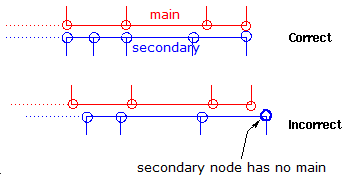
Figure 1.
This must remain true when interface is moving.
If a node has no projection on the main surface, the algorithm issues a warning but still works, because the secondary node remains associated to the nearest main segment.
Rule 2:
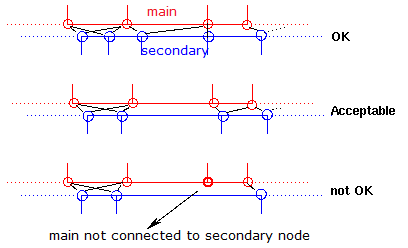
Figure 2.
If a main segment does not have a secondary but its neighbors do, the algorithm still works, because the above rule is satisfied. In principle, it is nevertheless recommended that main segments have at least one secondary node.
You can say that the secondary grid must be finer or equal to the main.
Rule 3:
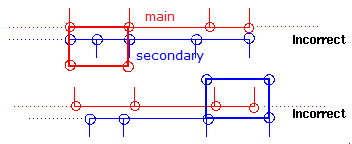
Figure 3.
Rule 4:
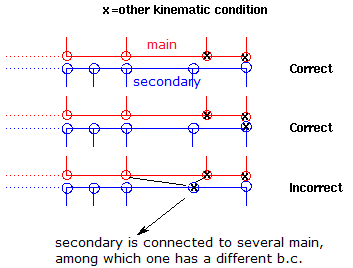
Figure 4.
This has to remain true when interface slides.
Fluid/Structure Interaction (ALE/Lagrange Interface)
Three kinds of interfaces are available.
Interface TYPE1
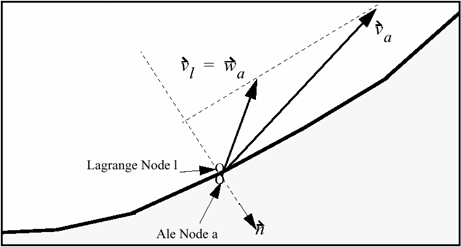
Figure 5. Fluid-Structure Interaction with Interface TYPE 1
Interface TYPE9
This is an ALE/Lagrange interface with void opening and free surface (that is, if the main and secondary sides are not in contact, there is no interaction between them). An ALE part is defined as secondary and the Lagrangian part is defined as main. The grid velocity is equal to the material velocity in normal direction.
Interface TYPE18 (CEL)
Interface TYPE18 creates contact between Euler/ALE nodes and a Lagrangian main surface. Visco-elastic penalty method is used to impose a relative material (fluid) velocity tangent to the main surface. The grid velocity is not modified by this interface. The interface allows the simulation of the penetration of a Lagrangian part (structure) into an Euler/ALE mesh, for example in the case of ship slamming.
The quality of simulation results using this interface depends strongly on the interface parameters and especially on the stiffness of the interface.
- The (highest) fluid density
- Velocity of the phenomenon (speed of the sound or higher for supersonic phenomenon)
- Surface of the Lagrangian elements
- with being the length of fluid element

Figure 6. - Constant stiffness with
- Viscosity related to the interface stiffness:
(2) With or
and are the air characteristics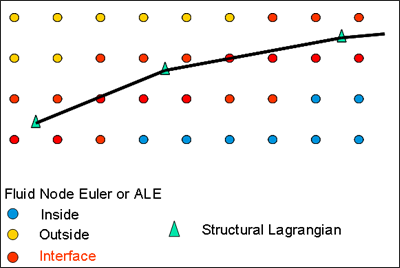
Figure 7. Fluid-Structure Interaction with Interface TYPE 18